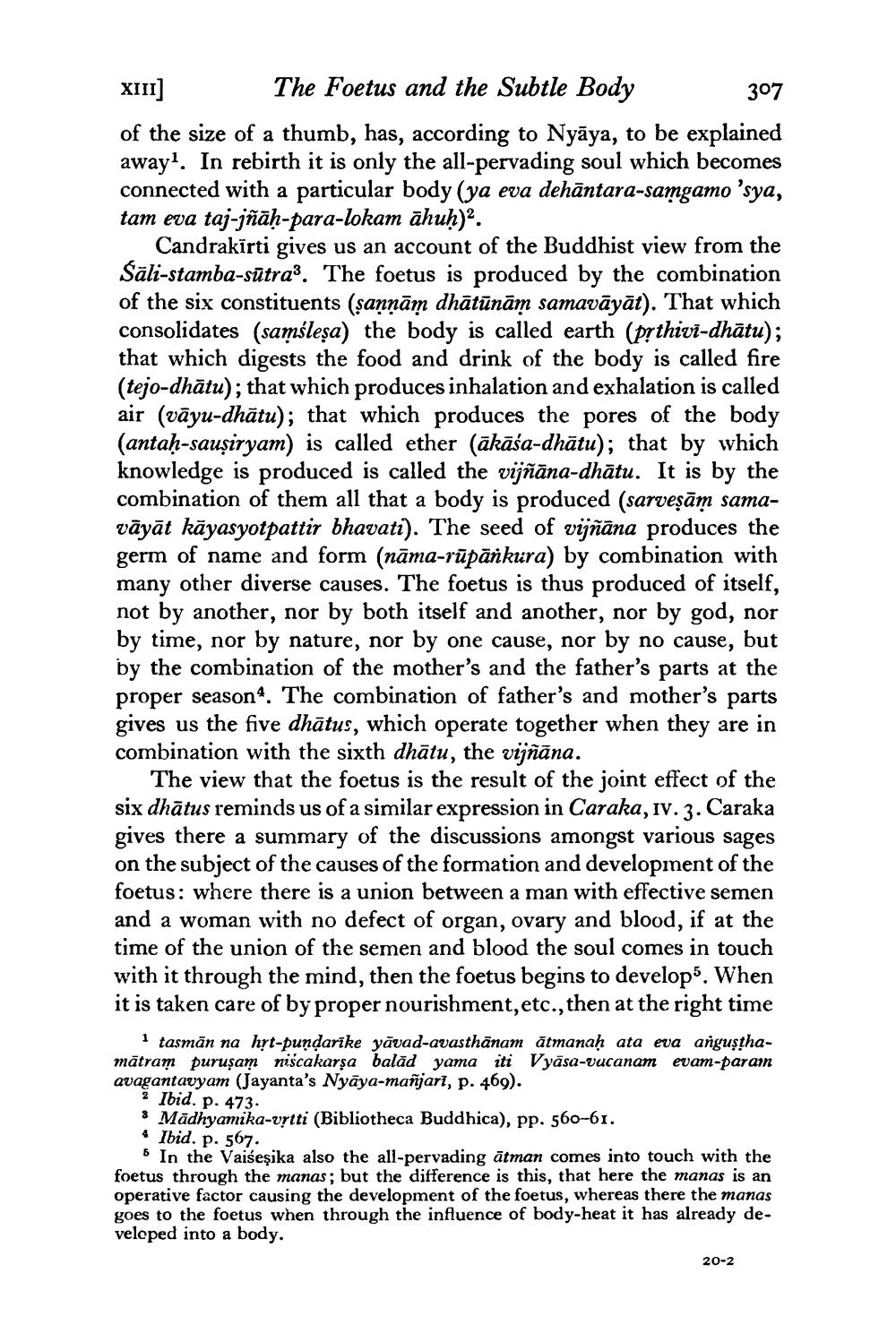________________
XIII]
The Foetus and the Subtle Body
307
of the size of a thumb, has, according to Nyaya, to be explained away1. In rebirth it is only the all-pervading soul which becomes connected with a particular body (ya eva dehāntara-samgamo 'sya, tam eva taj-jñāḥ-para-lokam āhuḥ)2.
Candrakirti gives us an account of the Buddhist view from the Sali-stamba-sūtra3. The foetus is produced by the combination of the six constituents (ṣaṇṇām dhātūnām samavāyāt). That which consolidates (samśleṣa) the body is called earth (prthivī-dhātu); that which digests the food and drink of the body is called fire (tejo-dhātu); that which produces inhalation and exhalation is called air (vāyu-dhātu); that which produces the pores of the body (antaḥ-sauşiryam) is called ether (ākāśa-dhātu); that by which knowledge is produced is called the vijñāna-dhātu. It is by the combination of them all that a body is produced (sarveṣām samavāyāt kāyasyoṭpattir bhavati). The seed of vijñāna produces the germ of name and form (nāma-rupankura) by combination with many other diverse causes. The foetus is thus produced of itself, not by another, nor by both itself and another, nor by god, nor by time, nor by nature, nor by one cause, nor by no cause, but by the combination of the mother's and the father's parts at the proper season. The combination of father's and mother's parts gives us the five dhātus, which operate together when they are in combination with the sixth dhātu, the vijñāna.
The view that the foetus is the result of the joint effect of the six dhātus reminds us of a similar expression in Caraka, IV. 3. Caraka gives there a summary of the discussions amongst various sages on the subject of the causes of the formation and development of the foetus: where there is a union between a man with effective semen and a woman with no defect of organ, ovary and blood, if at the time of the union of the semen and blood the soul comes in touch with it through the mind, then the foetus begins to develops. When it is taken care of by proper nourishment, etc., then at the right time
1 tasman na hrt-pundarike yavad-avasthānam atmanaḥ ata eva angusthamatram puruşam niscakarsa balad yama iti Vyasa-vacanam evam-param avagantavyam (Jayanta's Nyāya-mañjarī, p. 469).
2 Ibid. p. 473
Madhyamika-vṛtti (Bibliotheca Buddhica), pp. 560-61.
4 Ibid. p. 567.
In the Vaiseşika also the all-pervading atman comes into touch with the foetus through the manas; but the difference is this, that here the manas is an operative factor causing the development of the foetus, whereas there the manas goes to the foetus when through the influence of body-heat it has already developed into a body.
20-2




